There’s no debate that data growth is accelerating across virtually all market segments. While large SANs and cloud storage can accommodate a portion of this data, there’s a substantial on-prem need to expand server storage for various use cases. To help customers solve these needs, Dell has introduced a new line of JBODs. Three new PowerVault MD JBOD models include JBODs that deliver economic density, performance-optimized storage, and a capacious 60-bay unit that can scale to handle up to 2.4PB at launch with increased capacity planned.
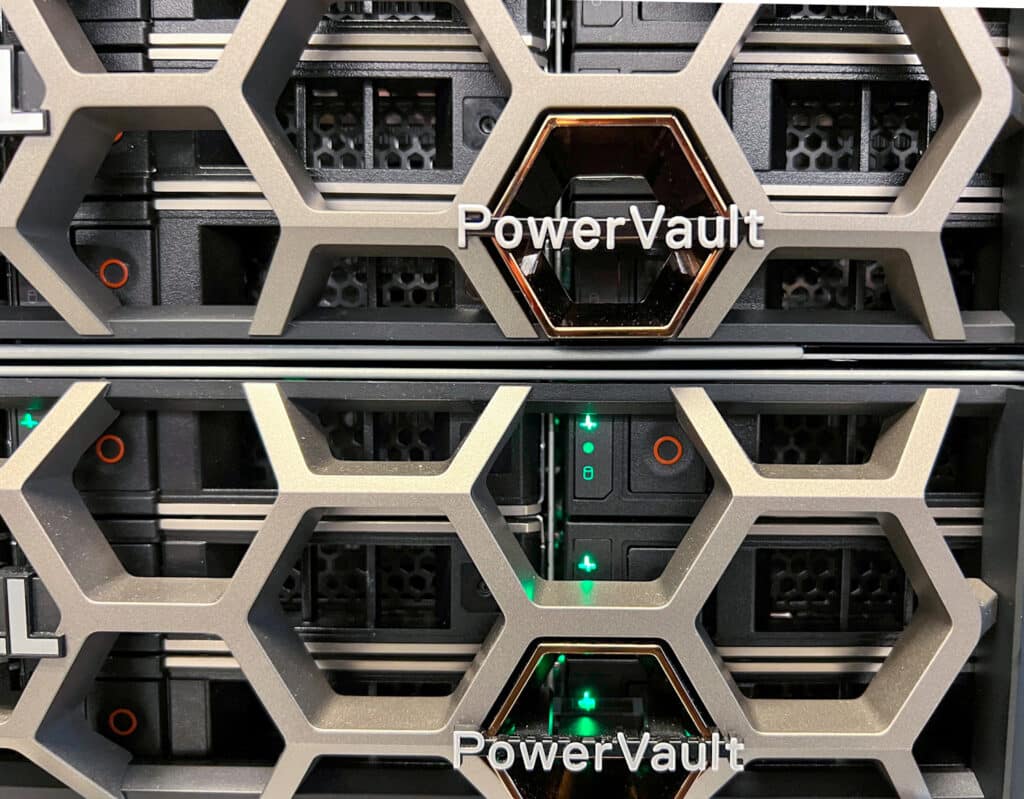
Modern Server Applications Depend on JBODs
Even when configuring the modern generation of PowerEdge servers, there’s only so much storage that can be locally attached within the chassis. In an expanding world of use cases, many run into a situation where they have plenty of compute power but need more storage capacity. JBODs also offer flexibility in scale, stacking on top of each other to help organizations add capacity as data needs grow.
Most are familiar with the popular JBOD use cases. Data archiving, backup and recovery, media storage and streaming, and unstructured data are all prominent and logical spots for JBODs. They can also be great for virtualized environments like Hyper-V and, with planned support in the future, VMware, particularly for organizations that require high-capacity storage and have limited budgets. JBODs can be used as a direct-attached storage solution in hypervisors, a low-cost alternative to more expensive SAN, NAS, or cloud storage.
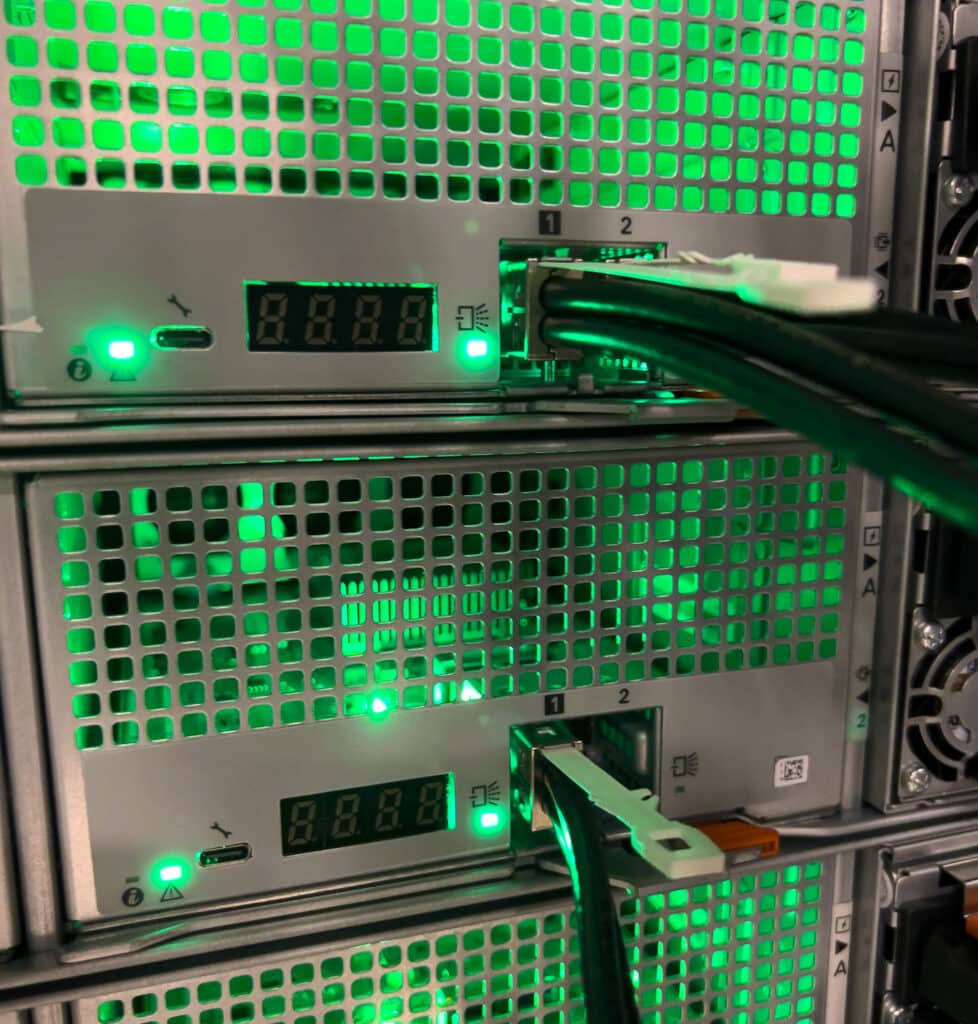
Don’t get lulled into the notion that JBODs are only a midmarket bulk-storage solution. JBODs are wildly popular in other use cases like big data analytics and AI workloads, both in the enterprise and in HPC deployments. In these cases, JBODs get more data closer to where processing occurs, like a Dell PowerEdge Server stuffed with GPUs or other accelerators.
New Dell PowerVault MD JBOD Hardware
With the need to create these large volumes for storing data, there needs to be a platform that can support the resiliency and latency requirements necessary to work within the demands of AI. The new generation of Dell PowerVault MD JBOD hardware, built and optimized for PowerEdge Servers, includes three new units. While each is designed to fit a specific need, many commonalities exist across the platforms.
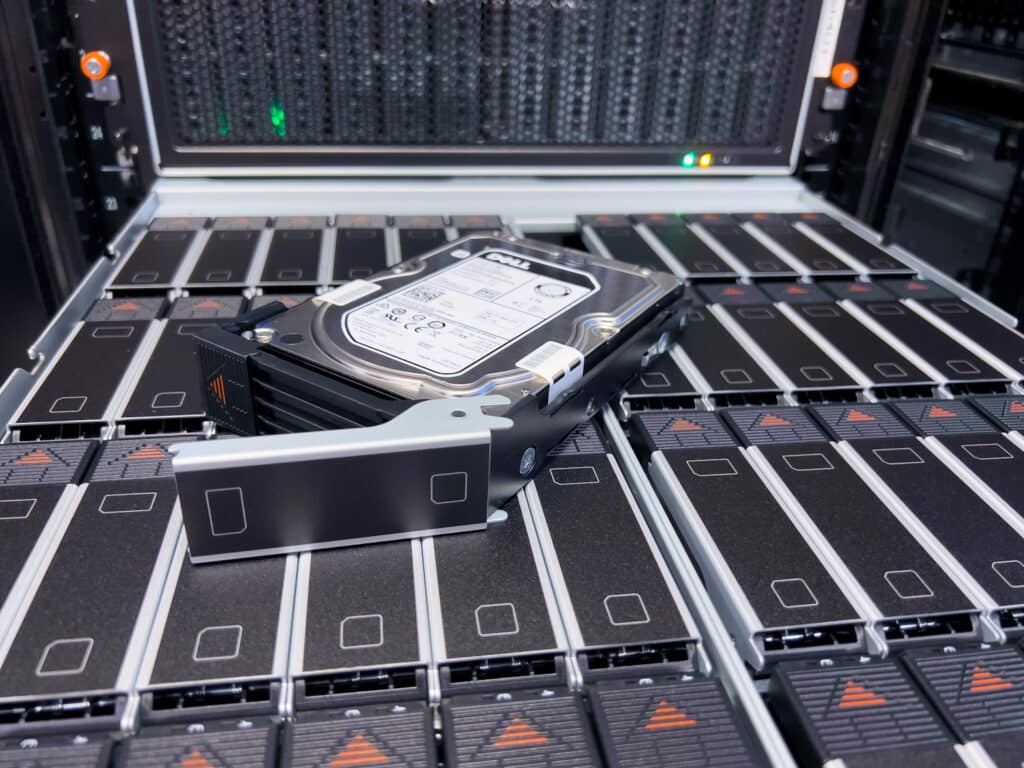
Looking toward the future, the new MD enclosures will support emerging technologies such as SAS4 24Gb and PowerEdge Raid Controller (PERC). PERC is a series of Dell RAID disk array controllers made for PowerEdge servers supporting SAS (HDDs) and solid-state drives (SSDs).
The naming convention for the MD enclosures is straightforward. The “24” refers to 24Gb host connectivity (16G Servers only), and the “12, 24, and 60” represents the number of drives in that enclosure. The new PowerVault MD enclosures include the following:
Dell PowerVault MD2412 (2U) Low-cost Dense Storage
- 12 x 3.5” drives in 2U chassis
- 24Gb SAS4 host connectivity for newest servers only (older platforms use either 12Gb SAS or 24Gb SAS4 with autosensing)
- 24Gb SAS expansion connectivity
- Max Expansion Enclosures: 8
- Max Capacity (full expansion): 1.92PB
Dell PowerVault MD2424 (2U) Performance-optimized Storage
- 24 x 2.5” drives in 2U chassis
- 24Gb SAS4 host connectivity for newest servers only (older platforms use either 12Gb SAS or 24Gb SAS4 with autosensing)
- End-to-end 24Gb SAS expansion connectivity supporting 24Gb SSDs
- Max Expansion Enclosures: 4 (at launch)
- Max SSD Capacity (full expansion): 737.28TB
- Max HDD Capacity (full expansion): 230.4TB
Dell PowerVault MD2460 (4U) High-density Storage
- 60 x 3.5” drives in 4U chassis
- 24Gb SAS4 host connectivity for newest servers only (older platforms use either 12Gb SAS or 24Gb SAS4 with autosensing)
- 24Gb SAS expansion connectivity
- Max Expansion Enclosures: 2 (at launch)
- Max Capacity (full expansion): 2.4PB
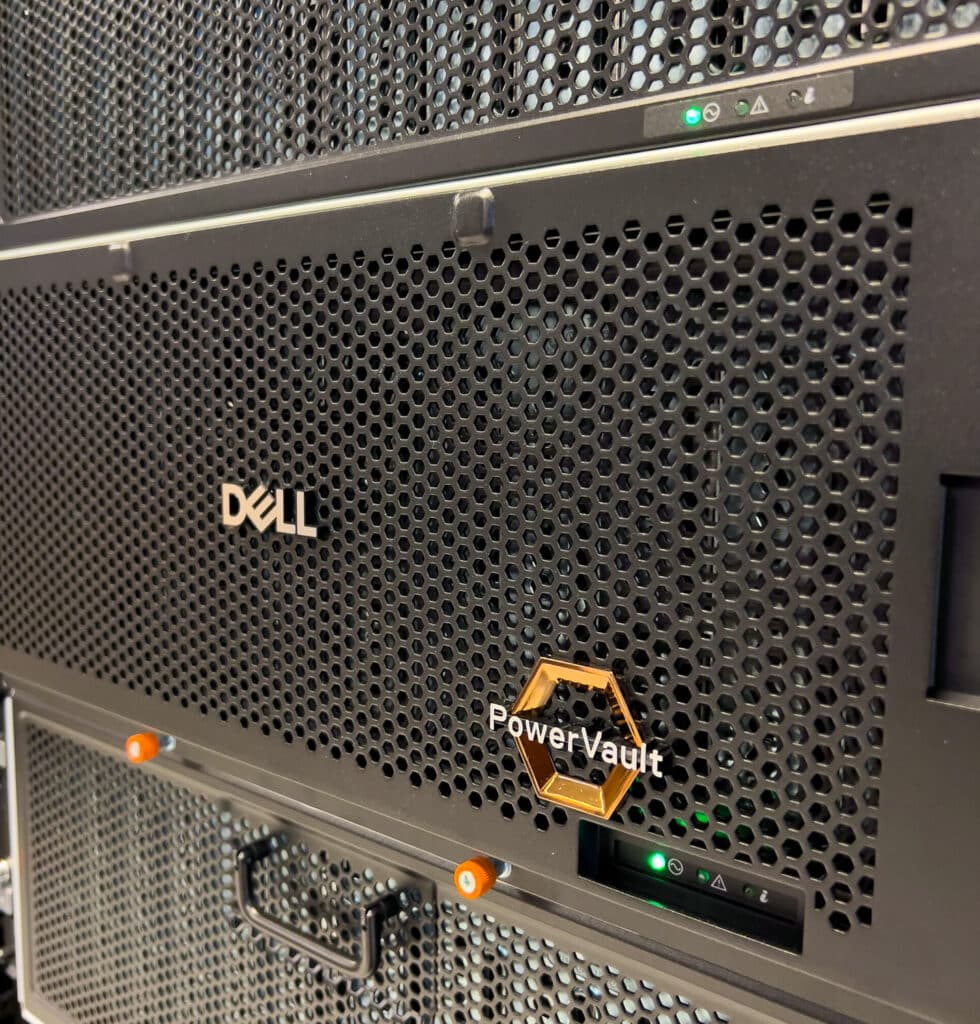
(PowerVault ME484 5U EBOD will still be available as an expansion for PowerVault ME5 storage arrays.)
Dell PowerVault MD JBOD Management
With the new PowerVault MD JBOD enclosures, it’s important to know that a significant portion of engineering has gone into management. All the JBODs offer integration with Dell iDRAC for system management. Dell PowerEdge users have come to appreciate iDRAC as one of the most secure and robust applications to administer and manage lifecycle updates. IDRAC is designed for secure local and remote server management to simplify deploying, updating, and monitoring PowerEdge servers from anywhere at any time.
The PowerVault MD JBODs benefit from many of the PowerEdge features, making them a fully integrated component within the Dell server stack. PowerEdge server management with IDRAC can manage in-server storage and external DAS as a single interface, utilizing the 24Gb connectivity more efficiently.
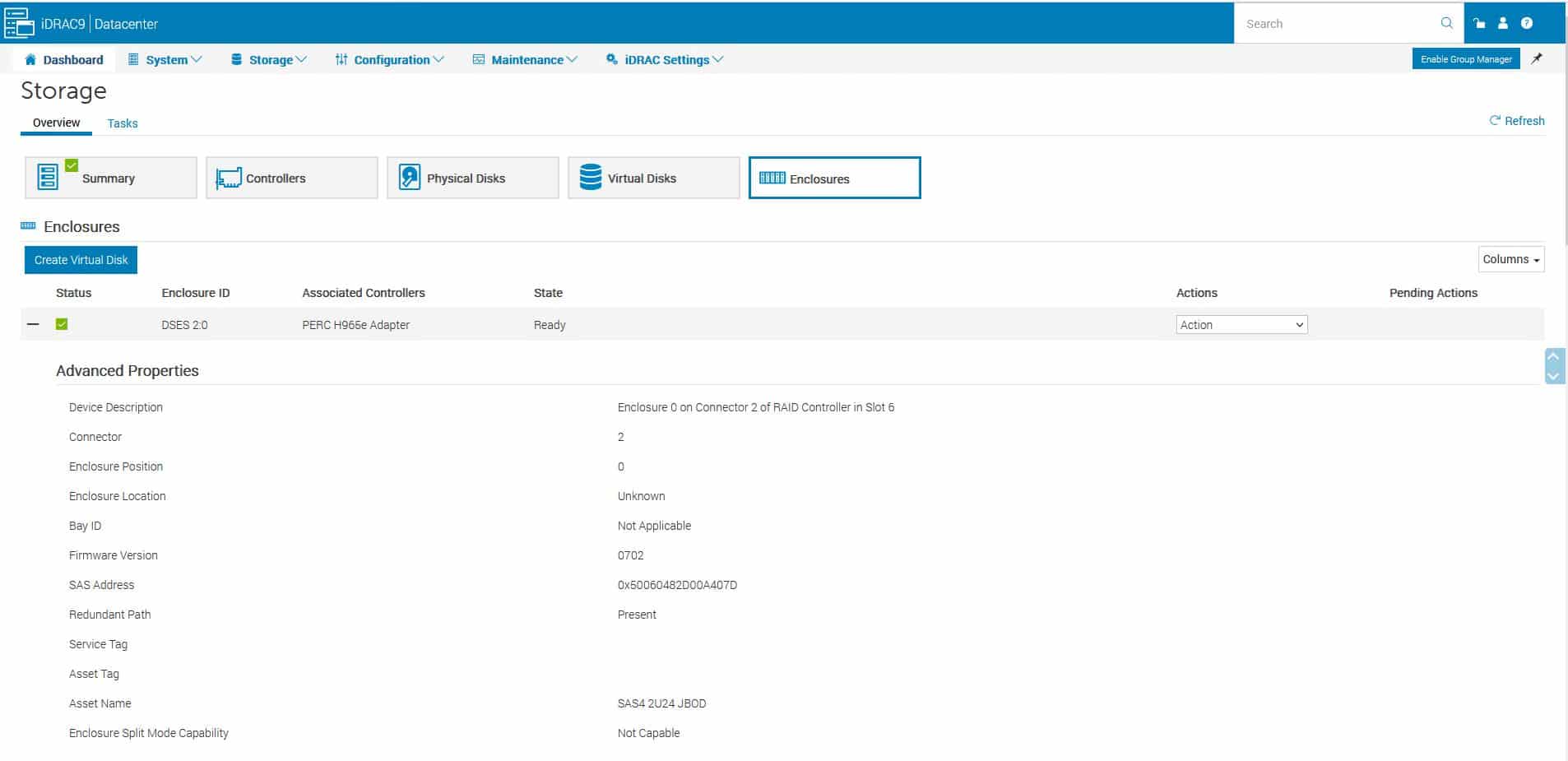
The new MD enclosures will also support Storage Hardware Manager CLI (SHMCLI), an application allowing storage installers, developers, and engineers to monitor enclosures and HDDs or SDDs. CLI commands can be run from the system prompt on Microsoft Windows or a Linux terminal, and SHMCLI can display the status of objects in the system and device firmware.
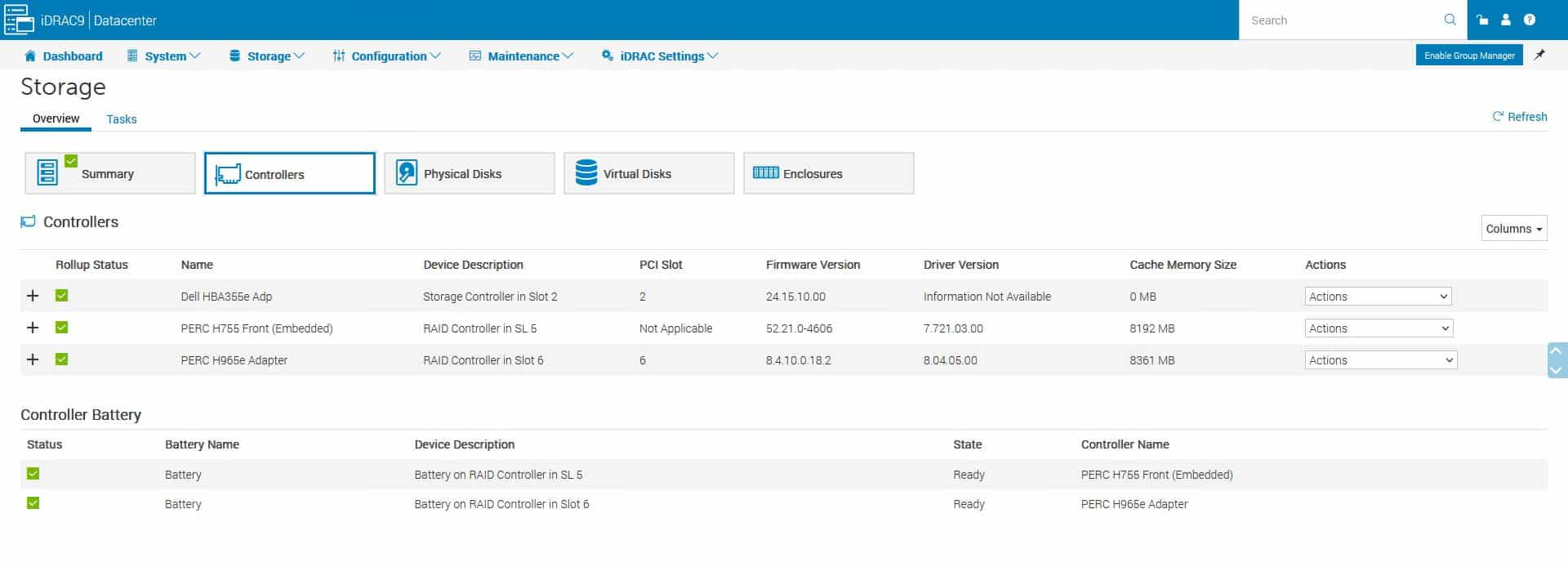
The Dell PowerVault MD enclosures provide the option to include self-encrypted drives (SEDs) with drive-level encryption, allowing customers to prioritize drive security by ensuring their data is secure, even when a drive is removed. The SEDs also support instant Secure Erase, which permanently removes data when repurposing or decommissioning drives.
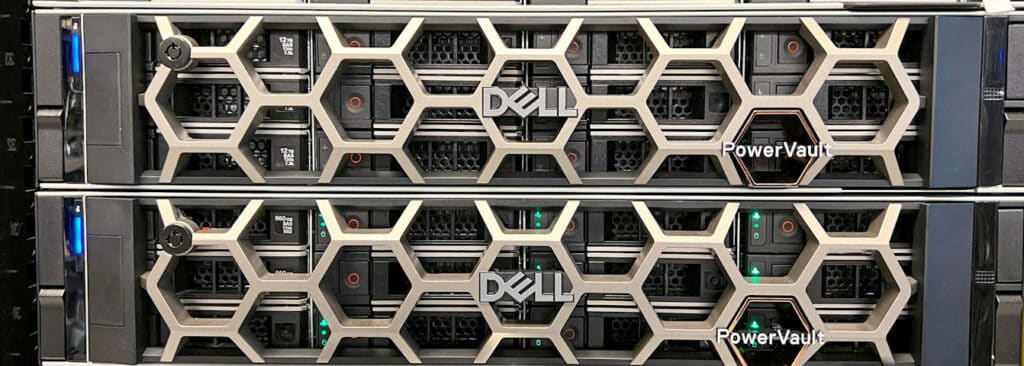
Dell PowerVault MD JBOD Performance
We tested the 2U PowerVault MD2424 unit connected to a Dell R760 with a PERC (future) H965e RAID card we are testing in the lab. This is a new PCIe GEN4 RAID card with an x16 PCIe interface. Fully saturated, the card’s limit is the interface itself, which can provide around 27GB/s.
We created two RAID5 flash groups with Samsung and KIOXIA SSDs and connected the JBOD to the PowerEdge R760 with dual SAS4 cables. This configuration, while not officially qualified yet, allows for dual paths between the server and both PowerVault controllers, optimizing performance and resiliency.
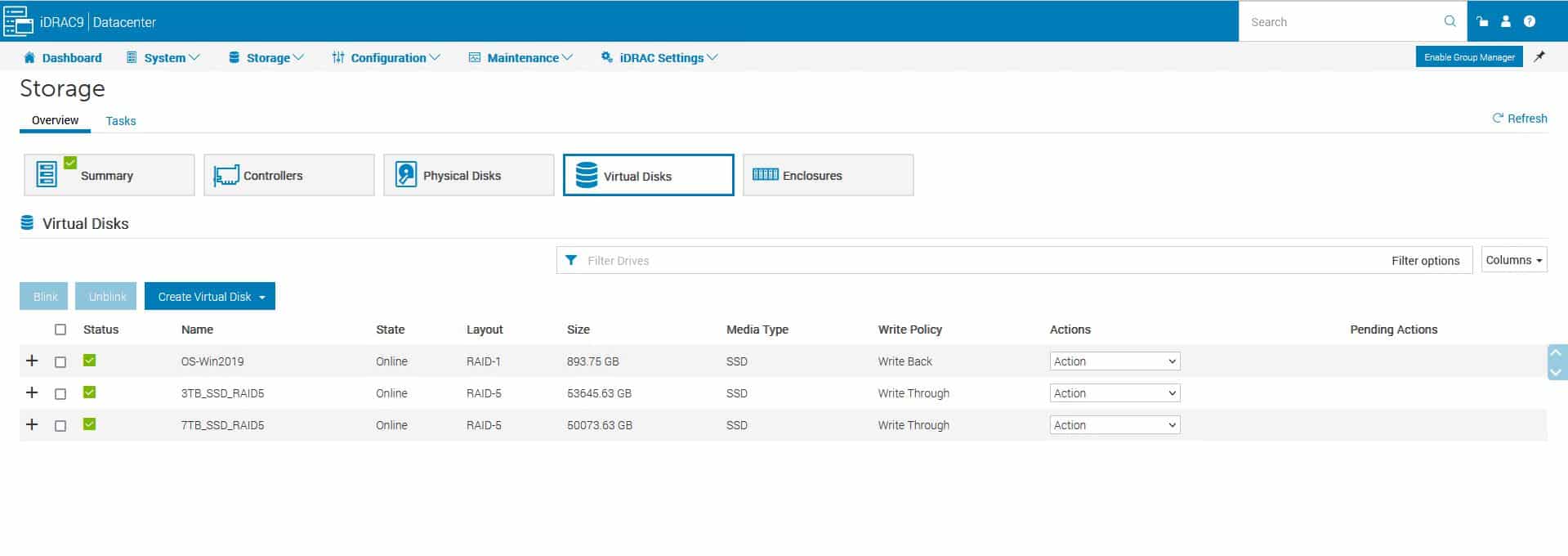
Dell PowerVault LoadGen
- 2 x Intel 6430 Processor (2.1GHz, 32-Cores)
- 128GB DDR5
- Dell PERC (future) H965e
- Windows Server 2019
Dell PowerVault MD2424
- 16 x 3.84TB KIOXIA PM6-R
- 8 x 7.68TB Samsung PM1653
For the performance testing, we looked at peak bandwidth and throughput. We used the FIO workload generator with 1MB sequential and 4K random profiles. Each profile used a 16-thread and 16-queue configuration.
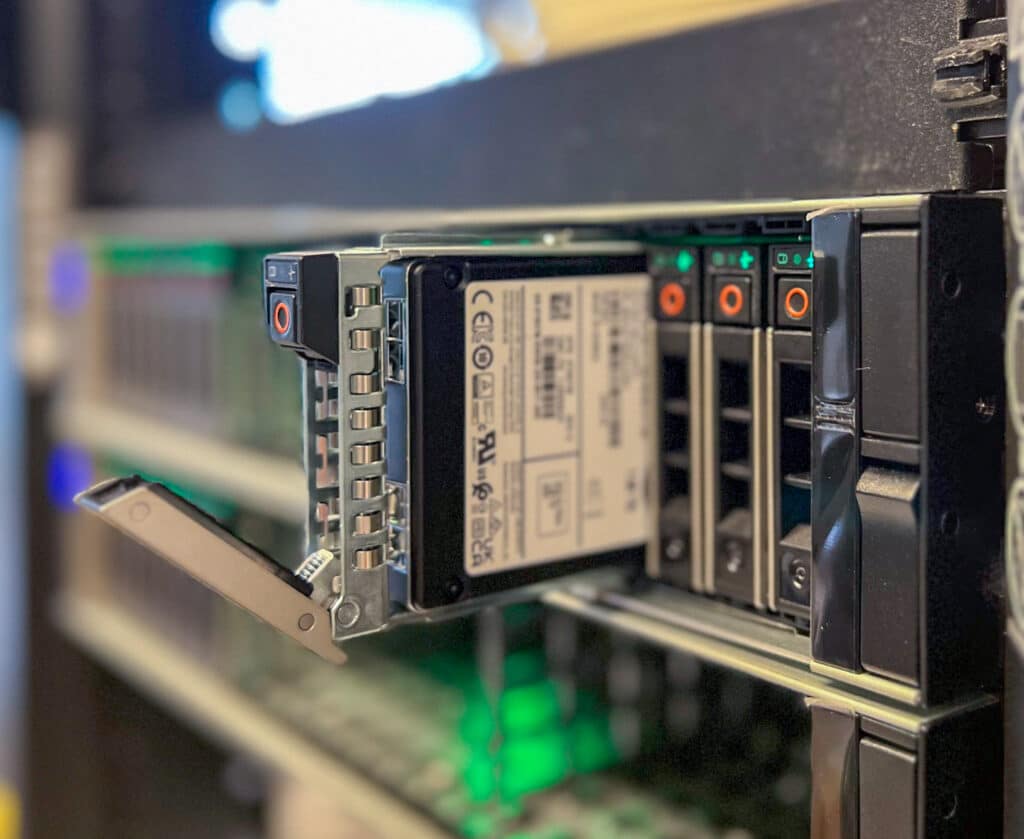
Looking at peak bandwidth, we were able to fully saturate the PERC (future) H965e RAID card with a single SAS4 PowerVault MD2424 attached to the PowerEdge R760.
This worked out to 26.9GB/s read, and 9.4GB/s write in our sequential transfer test. This quickly shows the benefits of leveraging SAS4, matching the performance of the SSDs to the link between the PowerVault and PowerEdge Server.
| Workload | Read Bandwidth | Read Throughput | Read Latency | Write Bandwidth | Write Throughput | Write Latency |
|---|---|---|---|---|---|---|
| 1MB Sequential (16QD) | 26.9GB/s | 27.6k IOPS | 1.1ms | 9.4GB/s | 9,427 IOPS | 3.4ms |
| 4KB Random (16QD) | 1.13GB/s | 275k IOPS | 107us | 774MB/s | 189k IOPS | 161us |
A Storage Alternative for AI
How do JBODs fit into an AI environment? With the massive amount of content generated and stored, JBODs, like those in the PowerVault MD models, offer increased capacity and a much lower price point than a SAN. With JBODs, some configurations allow storage to be configured by combining multiple disk drives into a single logical unit. That takes away a JBOD’s ability to provide data redundancy or fault tolerance like RAID configurations, yet it can still be utilized in an AI environment for certain purposes.
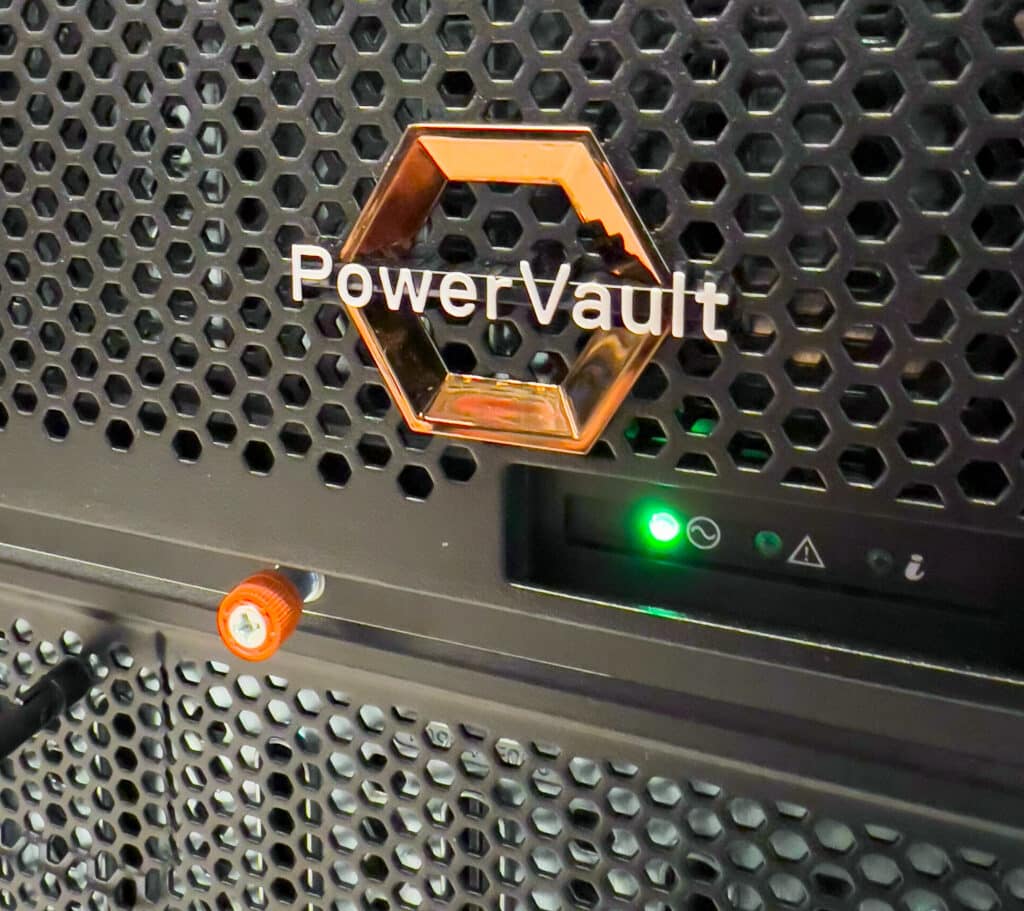
There are various use cases for using Dell PowerVault MD JBODs in an AI environment.
- Data storage: An obvious one, but PowerVault JBODs can provide increased storage capacity by combining multiple disks into a single logical volume. As the industry grapples with attempting to tame AI, it still needs lots of storage. Creating large logical volumes allows for storing large datasets or training data used in AI applications.
- Data staging: Providing a less expensive solution for AI, PowerVault JBODs can be used for staging data before AI algorithms process it. By combining disks, you can create a larger storage space where data can be temporarily stored and accessed by the AI system. Software RAID can also combine disks.
- Data archiving: A typical JBOD use case is long-term data archiving. Not just for AI, but when large volumes of data need to be stored cost-effectively, JBODs fit the bill. JBODs allow you to utilize individual disks as separate storage units, accommodating large datasets without the complexity and cost of redundancy.
- Non-critical AI tasks: For non-critical AI tasks that don’t require high availability or fault tolerance, JBODs can offer a cost-effective solution that provides the benefits of increased storage capacity without the added overhead of RAID configurations.
Dell PowerVault MD JBODs also provide a cost-effective solution for server capacity expansion, easily integrating with existing or new servers. When independent storage scaling is preferred, they can deliver large amounts of data in the TB to PB range. However, it’s important to note that JBOD lacks the fault tolerance and redundancy offered by RAID configurations. Therefore, appropriate backup and data protection mechanisms must be in place to prevent data loss, especially for critical AI applications.
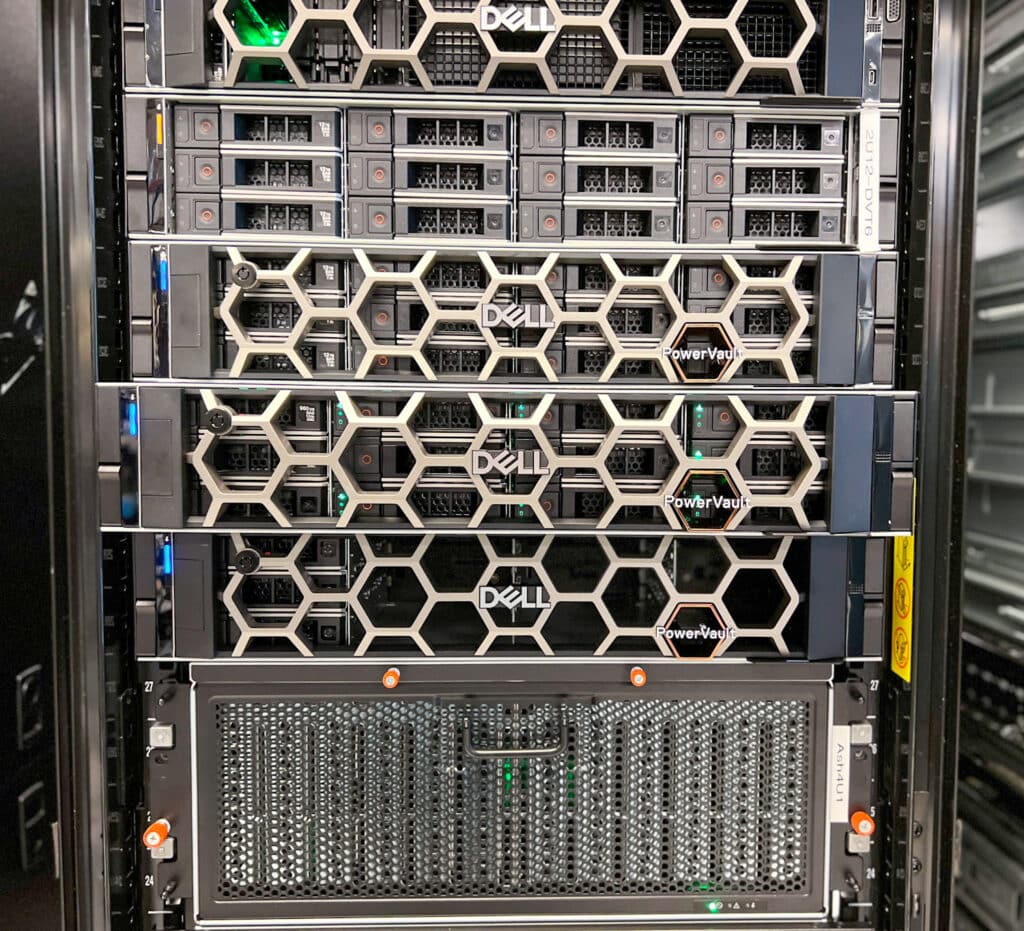
The ability to store and process massive datasets locally on a GPU server directly impacts the AI’s performance, as faster data access can lead to quicker training and inference times. This is particularly important for high-performance applications such as deep learning, where large volumes of data must be accessed rapidly. From an AI perspective, JBODs can offer a cost-effective and efficient storage solution that significantly enhances data accessibility for machine learning tasks.
JBODs can offer superior performance for specific workloads by avoiding network latencies associated with a SAN. JBODs provide a robust and reliable solution that can be easily integrated into existing systems. Their simplicity results in a hardened solution that “just works,” reducing the time and resources needed for configuration and management. Compared to SAN arrays, JBODs often present a more economical choice, as they do not require expensive hardware or specialized knowledge to set up and maintain.
Final Thoughts
The new Dell PowerVault MD JBODs give customers three new platforms to help cost-effectively manage their perpetually-growing data footprint. Of course, PowerVault MD pairs exceptionally well with Dell PowerEdge servers; the Dell server/JBOD experience is fully integrated for onboarding and lifecycle management.
We saw this hands-on as we went through the process of bringing a PowerVault MD2424 with 24 SAS SSDs online for testing. Connecting the PowerVault MD2424 was literally plug-and-play, with all configuration and management done through iDRAC, which PowerEdge customers know very well. iDRAC also handles all the lifecycle management, so the server admin can easily maintain the PowerEdge server and PowerVault JBOD through the same interface.
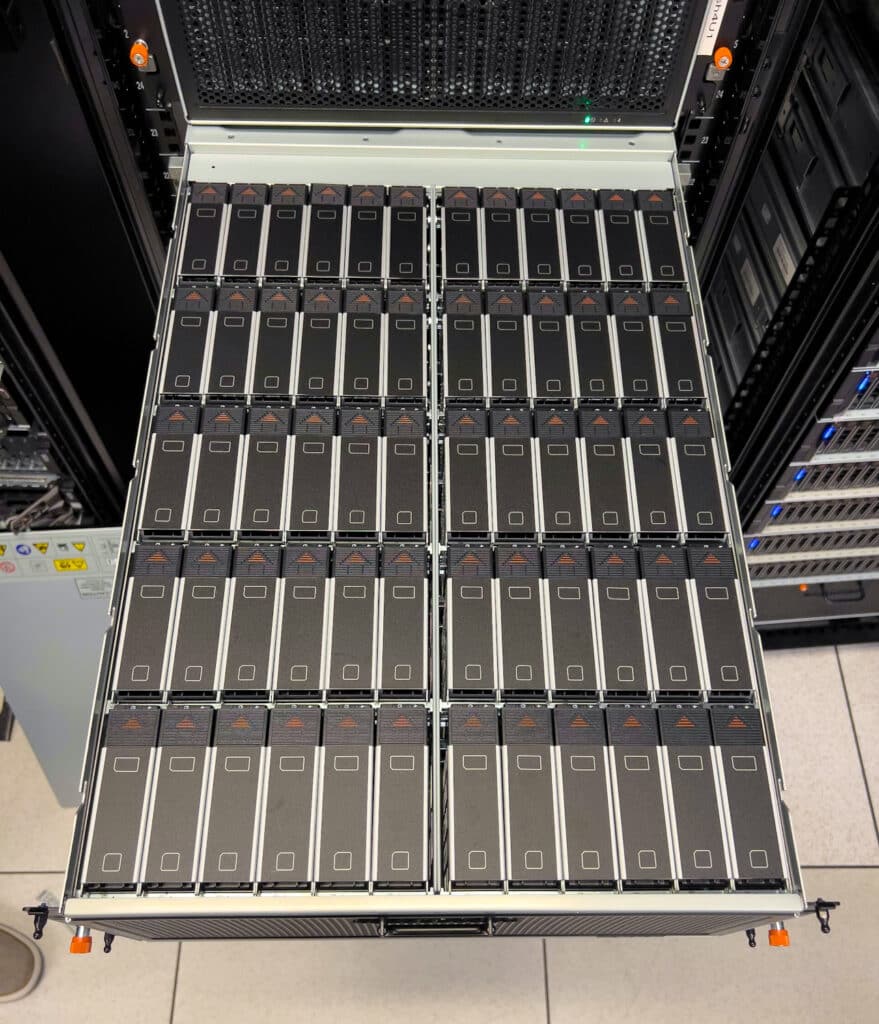
While we enjoyed saturating the SAS cards during testing, flash JBODs won’t be for everyone. To solve those needs, Dell also launched a mainstream PowerVault MD2412 as a low-cost 12-bay JBOD and the more grandiose PowerVault MD2460, which delivers 60 drives in 4U. The new family of JBODs enables a wide range of use cases like unstructured file storage, backup/archive storage, and software-defined storage. But we’ve got an eye on rapidly growing workloads like AI that need quick local storage to keep expensive GPUs supplied with data for these new PowerVault JBODs.
Ultimately the Dell PowerVault MD JBODs execute their mission well with the latest in SAS4 connectivity and support across the PowerEdge portfolio, broadening the storage capabilities of the servers. The technology is rock-solid and will provide business value for many years into the future.
For additional details about the new PowerVault MD enclosures, please refer to the Dell PowerVault website.
This report is sponsored by Dell Technologies. All views and opinions expressed in this report are based on our unbiased view of the product(s) under consideration.




 Amazon
Amazon